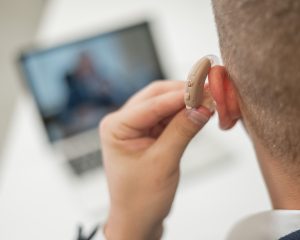You invested in hearing aids, a significant step towards better hearing. Yet, you might find yourself still straining to catch conversations, feeling frustrated that your devices aren’t living up to your expectations. If this sounds familiar, you’re not alone. While hearing aids are powerful tools, optimal performance hinges on several factors beyond simply wearing them. Let’s delve into why you might not be hearing well with your current hearing aids, focusing on calibration, settings, and other essential details that can make all the difference.
Beyond Amplification: The Intricacies of Hearing Aid Performance
Modern hearing aids are sophisticated pieces of technology. They don’t just make all sounds louder; they’re designed to amplify specific frequencies
The Critical Role of Calibration and Programming
Think of your hearing aids like a finely tuned instrument. Just as a piano needs to be calibrated to produce the correct notes, your hearing aids need accurate programming to deliver the right sounds at the right frequencies and volumes. This initial programming is based on the audiogram obtained during your hearing evaluation.
- Inaccurate Initial Programming: If the initial programming wasn’t precise or didn’t fully capture the nuances of your hearing loss, your hearing aids might not be providing the amplification where you need it most.
- Changes in Hearing: Your hearing can change over time. If your hearing aids haven’t been reprogrammed to reflect these changes, they may no longer be adequately addressing your current needs. This is a key reason for regular follow-up appointments.
Understanding and Optimizing Your Hearing Aid Settings
Most modern hearing aids come with various settings and programs designed for different listening environments. Not utilizing these correctly can significantly impact your hearing experience.
- Incorrect Program Selection: Your hearing aids might have programs for quiet environments, noisy situations, music, or phone calls. Using the wrong program for the environment you’re in can lead to difficulty understanding speech or discomfort from amplified background noise.
- Volume Control Issues: The volume might be set too low for certain situations or too high, causing distortion or discomfort. Understanding how to adjust the volume on your devices is crucial.
- Advanced Features Not Optimized: Many hearing aids boast advanced features like noise reduction, directional microphones, and feedback management. If these features aren’t properly configured or adjusted for your specific needs, they might not be working effectively. For instance, if noise reduction is set too aggressively, it might also suppress speech sounds.
The Importance of Proper Fit and Maintenance
Beyond programming and settings, the physical aspects of your hearing aids play a vital role in their performance.
- Poor Fit: If your hearing aids don’t fit snugly and comfortably in your ears, sound can leak out, leading to feedback (whistling) and reduced sound quality. Ill-fitting devices might also not be positioned correctly to capture sound effectively.
- Blockages and Obstructions: Earwax buildup in the ear canal or the hearing aid itself can block sound transmission, significantly hindering performance. Regular cleaning and maintenance are essential.
- Component Malfunction: Like any electronic device, hearing aids can experience technical issues. A malfunctioning microphone, receiver, or processor can lead to reduced sound quality or complete loss of function.
When to Seek Professional Help
If you’re consistently struggling to hear with your current hearing aids, it’s crucial to schedule a follow-up appointment with your audiologist. They can:
- Re-evaluate your hearing: To determine if your hearing has changed.
- Reprogram your hearing aids: To ensure they are accurately calibrated to your current hearing profile.
- Adjust your hearing aid settings: To optimize performance for different listening environments and your specific needs.
- Check the fit of your hearing aids: To ensure proper placement and prevent sound leakage.
- Inspect your hearing aids for any blockages or malfunctions.
- Provide guidance on proper use and maintenance.
- Explore advanced features and ensure they are appropriately configured.
Don’t Settle for Less Than Optimal Hearing
Investing in hearing aids is an investment in your quality of life. If you’re not experiencing the benefits you expected, don’t get discouraged. Often, the issue lies in the calibration, settings, fit, or maintenance of your devices. Taking the proactive step to consult with your audiologist can make a significant difference, ensuring your hearing aids are working optimally to help you reconnect with the world around you.
Ready to fine-tune your hearing experience? Schedule a follow-up appointment with us today to explore how we can optimize your current hearing aids for clearer, more comfortable listening.

